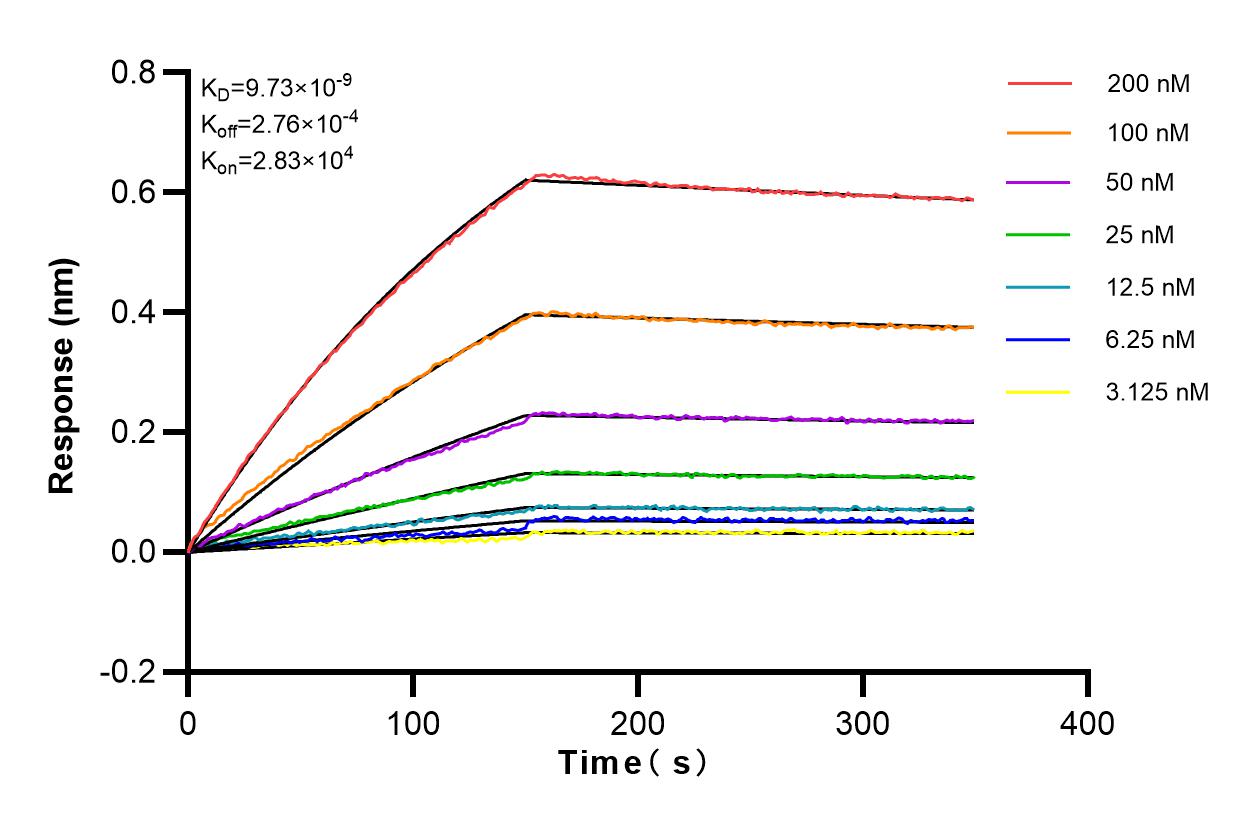STT3A Recombinant antibody
STT3A Recombinant Antibody for ELISA
Host / Isotype
Rabbit / IgG
Reactivity
human
Applications
ELISA
Conjugate
Unconjugated
CloneNo.
230426B10
Cat no : 83077-4-RR
Synonyms
Validation Data Gallery
Tested Applications
Recommended dilution
| Application | Dilution |
|---|---|
| It is recommended that this reagent should be titrated in each testing system to obtain optimal results. | |
| Sample-dependent, Check data in validation data gallery. | |
Product Information
The immunogen of 83077-4-RR is STT3A Fusion Protein expressed in E. coli.
| Tested Reactivity | human |
| Host / Isotype | Rabbit / IgG |
| Class | Recombinant |
| Type | Antibody |
| Immunogen | STT3A fusion protein Ag31994 相同性解析による交差性が予測される生物種 |
| Full Name | STT3, subunit of the oligosaccharyltransferase complex, homolog A (S. cerevisiae) |
| Calculated molecular weight | 705 aa, 81 kDa |
| GenBank accession number | BC020965 |
| Gene symbol | STT3A |
| Gene ID (NCBI) | 3703 |
| Conjugate | Unconjugated |
| Form | Liquid |
| Purification Method | Protein A purfication |
| Storage Buffer | PBS with 0.02% sodium azide and 50% glycerol pH 7.3. |
| Storage Conditions | Store at -20°C. Stable for one year after shipment. Aliquoting is unnecessary for -20oC storage. |
Background Information
STT3A, also named as Dolichyl-diphosphooligosaccharide--protein glycosyltransferase subunit STT3A, is a 705 amino acid prtein, which belongs to the STT3 family. STT3A is expressed at high levels in placenta, liver, muscle and pancreas, and at very low levels in brain, lung and kidney. STT3A is a catalytic subunit of the N-oligosaccharyl transferase (OST) complex which catalyzes the transfer of a high mannose oligosaccharide from a lipid-linked oligosaccharide donor to an asparagine residue within an Asn-X-Ser/Thr consensus motif in nascent polypeptide chains. N-glycosylation occurs cotranslationally and the complex associates with the Sec61 complex at the channel-forming translocon complex that mediates protein translocation across the endoplasmic reticulum (ER). SST3A seems to be involved in complex substrate specificity. STT3A is present in the majority of OST complexes and mediates cotranslational N-glycosylation of most sites on target proteins, while STT3B-containing complexes are required for efficient post-translational glycosylation and mediate glycosylation of sites that have been skipped by STT3A.


